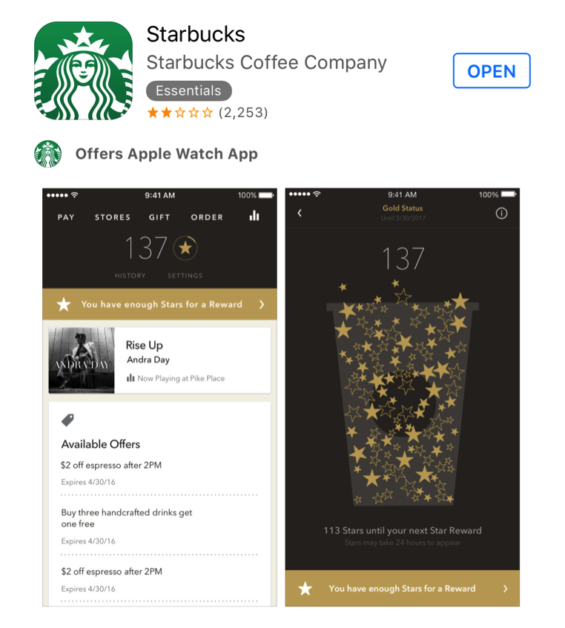7 Killer Mobile Marketing Campaigns that will Drive Leads and Engagement in 2023
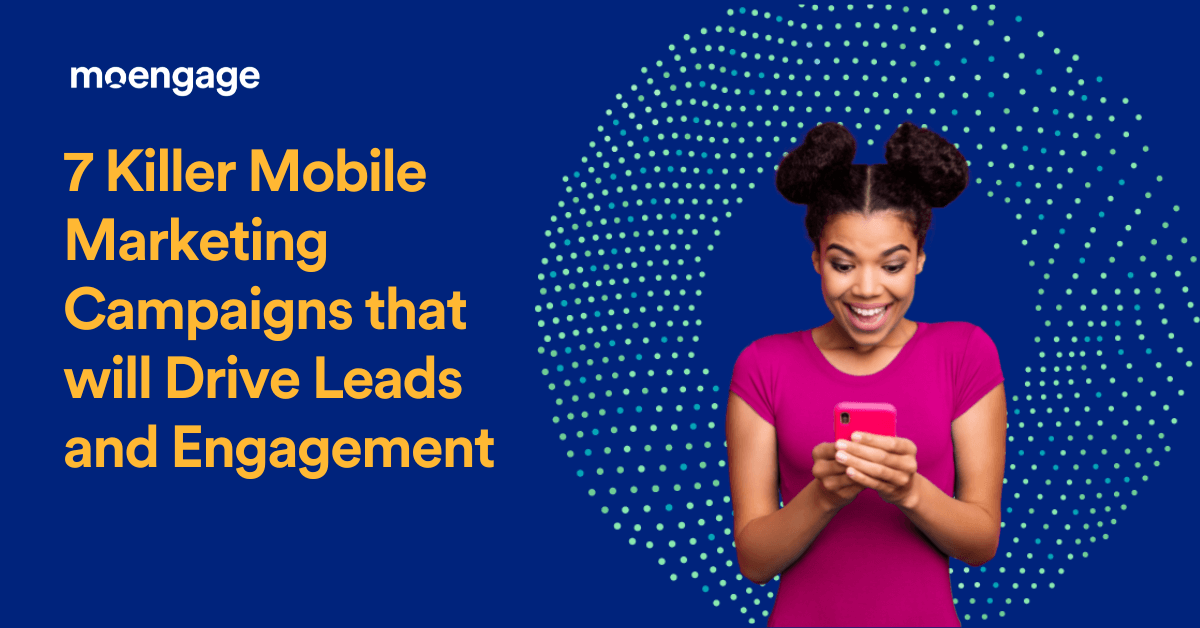
The number of smartphone customers globally stands at 3.8 Billion. In other words, 48.37% of the world’s population owns a smartphone. Further research by eMarketer claims that US mobile ad spending is predicted to increase by 22% to over USD 117 billion. Not capitalizing on this vast market seems like a lost opportunity.
Keep reading if you want inspiration to kickstart a highly effective mobile marketing campaign. This blog will look at the top 7 mobile advertising campaigns worth every penny (and effort) invested. Let’s get to it right away.
Top-7 Mobile Marketing Campaigns that can Boost Revenues (and User Engagement):
1. Starbucks’ “Mobile Order and Pay” Campaign to Provide Unparalleled Convenience
The Strategy: Starbucks launched a new feature, “Mobile Order and Pay,” on its app way back in 2015 to allow customers to order ahead through the app instead of waiting at the store–a smart move in today’s times, owing to the global pandemic that calls for social distancing. Once the customer has placed their order, they can go to the store for pickup.

|
The Results:
- The brand’s share of mobile orders increased from 3% in 2016 to 24% in 2020.
- According to eMarketer, 23 million consumers use the Starbucks app to make a purchase once every six months.
- Starbucks claims that nearly a quarter of all US retail orders are from mobile phones today.
The Learning: Brands should build user-friendly mobile apps to significantly reduce friction during their customer’s buying cycle. Additionally, they should stick to the following best practices for enhanced app retention:
- Incentivize brand loyalty through an app-based loyalty program like Starbucks, where customers can earn redeemable stars for every dollar spent.
- Offer a personalized and integrated digital and offline experience by using customer data such as individual preferences and purchasing behaviors. Did you know that customers can save songs they hear at the Starbucks store using the Spotify app? A brilliant idea for partnership and an ingenious move for personalization.
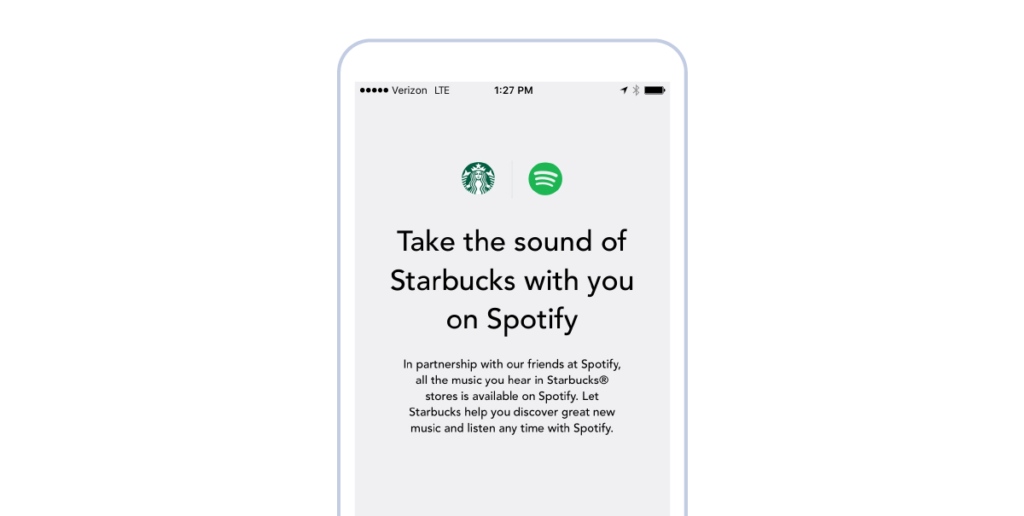
|
- Demonstrate your brand’s values and ethos as Starbucks does through its “Traceability” app feature, where customers can know how their coffee was sourced by scanning the package using the app.

|
As you can imagine, this humanizes the brand in front of the customer’s eyes and helps establish a stronger bond.
2. Unilever’s Brilliant Mobile Radio Channel Helped Connect with Consumers in a Challenging Market
The Strategy: Unilever wanted to reach the “media dark” state — Bihar in India — which happened to be a key market for the brand. The brand zeroed in on using smartphones to connect with customers. Why? Because interestingly, 65% of the population had mobile phones when this campaign ran (the numbers must be higher now). Here’s what the brand pulled off:
- It delivered content (think: music, jokes, series, songs, etc.), provided free entertainment, and advertised its brands using a mobile radio channel called “Kan Khajura Tesan:”

All customers had to do was give a missed call on a dedicated number and enjoy free content for 15 minutes while being advertised Unilever’s products:

The Results:
- Brands such as Pond’s, Close Up, and Wheel enjoyed a spontaneous increase in awareness at 56%, 39%, and 20%, respectively.
- In the first few weeks, the brand received 115,000 calls daily, reaching 24 million calls throughout the campaign.
- 140 million minutes of content was heard.
- 13,000 hours of engagement were seen each day.
- The brand reached 8 million consumers in just six months.
- The advertisements have been heard over 70 million times at only 4 cents per contact.
| The Learning: Mobile marketing campaigns, when done right, can positively impact your bottom line and boost brand awareness. As long as your campaign solves your customer base’s key pain point (s) and advertises the product/service, you can expect skyrocketing growth in mobile-friendly pockets everywhere on the globe. |
3. Tinder and Manchester City “Partner Up” to Interact with Fans in a Fun Capacity
The Strategy: The dating app, Tinder, partnered with Manchester City’s men’s and women’s leagues to allow app customers and football fans from around the world to engage in exciting activities, such as getting exclusive access to games, enjoying AR experiences, and getting exclusive access to stadium events.

|
Despite being a dating app, Tinder offered multiple opportunities for advertising and creating awareness for the sports club, including running campaigns on social media, driving digital content, and promoting events. It also doubled up as an effective platform to introduce new players to fans around the globe.

|
The Results:
- Both brands were successful in attracting a young audience on a global scale to their respective business due to an “instant connection” as a result of “shared interest (aka football).”
| The Learning: When it comes to the benefit of mobile marketing campaigns, it helps partner with other brands with similar inclusive values. By leveraging the combined power of both brands, marketers can attract new customers, retain the existing ones, and deliver a highly personalized and unique mobile experience that benefits both the brands and the audience — a win-win-win for all. |
4. Sephora’s In-App Notifications for a Personalized User Experience
The Strategy: Sephora (Malaysia) wanted to stand out in a highly competitive and saturated market. It created a unique “Lung Pao” promotional campaign on the eve of the Lunar New Year. Here’s how the brand successfully gamified its in-app messaging:
- The central idea was to mimic the tradition of gifting Ang Paos to the customers.
- Between January 15-17, consumers received a virtual red packet as an in-app message.
- Once they tapped to open the gift, customers could see a wide range of surprise gift options–from cash vouchers and loyalty program points to even a premium Dyson Hair Dryer.

|
- After a customer wins a gift, the brand sends another in-app message to allow them to fill in the personal details.
- This valuable data was then added to the customer’s profile in real-time, making it a treasure trove of information.
The Results:
- Using in-app message gamification increased purchases by 132% among the participants, who surprisingly had won the lowest-value prizes.
| The Learning: Brands can gamify their mobile campaigns and boost conversions effortlessly. Additionally, the primary goal of these campaigns should be to deliver a seamless and fun customer experience while providing real value to the customers. |
5. Spotify Uses Mobile Campaigns to Upsell Successfully
The Strategy: Spotify effectively uses mobile campaigns to upsell to customers by positioning it as a “moment of discovery” for freemium customers:

The end goal of this type of mobile marketing campaign can be to:
- Educate loyal customers about their subscription model options.
- Engage customers who have already experienced the app’s value (as opposed to first-time customers who may think your brand is too pushy and run the other way if you try to upsell to them).
- Proactively upsell to highly engaged customers who have shown an “intent.” For instance, say a customer shows interest by clicking on a Premium feature in Spotify’s case.
The Results:
- This campaign worked for Spotify, which boasted a 26.6% increase in conversion rates for its freemium offering–which is virtually unheard of. In other words, of its 75 million monthly users, 20 million were paying monthly fees to use the platform.
| The Learning: Mobile marketing campaigns can help brands cross-sell and upsell effectively if, and only if, they are targeting the right customers at the right time. This is why engaging in customer data analytics becomes a central focus for brands looking to boost their conversion rates via upsell/cross-sell means. |
6. Shopify Uses In-App Push Notification to Gather Invaluable User Feedback in Real-Time
The Strategy: Shopify uses in-app push notifications to encourage customers to provide feedback while using the app. Brands can roll out NPS surveys or ask for more in-depth feedback, as Shopify demonstrates below:
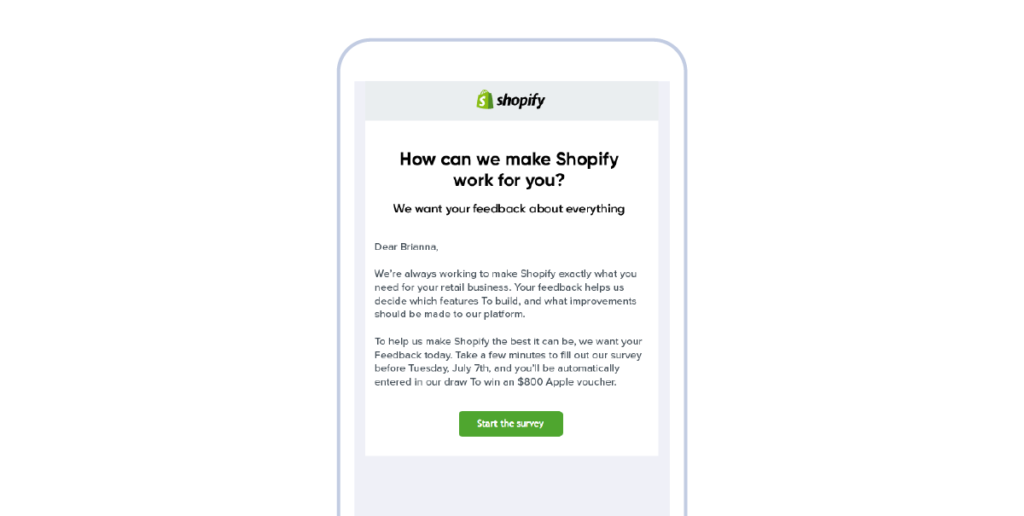
Pro tip: Incentivizing the feedback process is a best practice if you want more customers to participate in the survey.
| The Learning: Capturing your customer’s voice/option while actively engaged with your product is a great way to let the customers know that you genuinely value their support. This is where in-app push notifications truly shine. |
7. Netflix’s Innovative Mobile Campaign Boosted User Engagement
The Strategy: To help capture the customer’s attention, streaming giant Netflix created a realistic advertising creative that played on ‘fear’– a universal emotion that consumers would experience after watching nearly every episode of the popular techno-paranoia drama Black Mirror. The brand showcased the following creative–a mobile screen that resembled a broken piece of glass as though the viewer was living in the show:
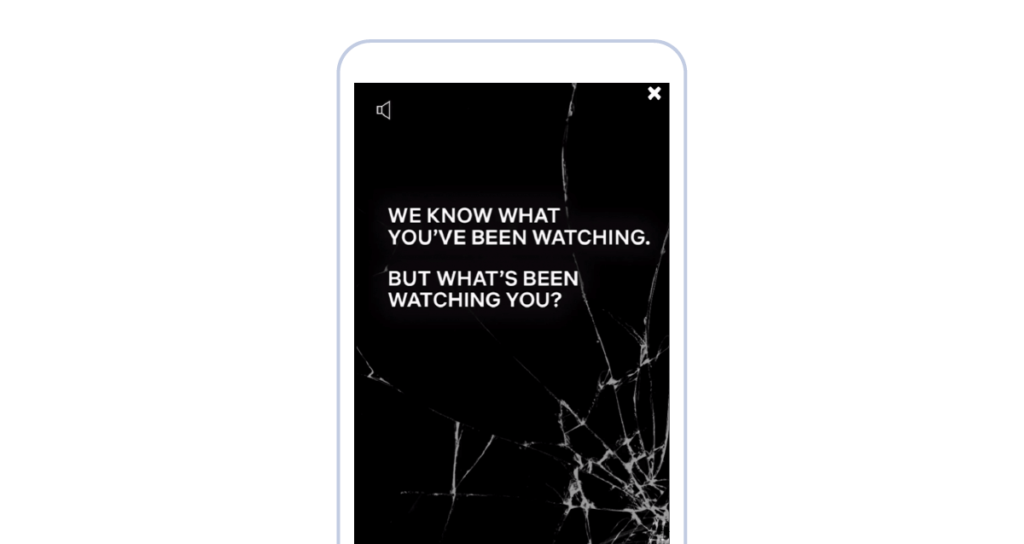
The Results:
- As you can imagine, this ad was an instant hit among new and old fans of the show.
| The Learning: Owing to their digital nature, mobile marketing campaigns can be created with more flexibility and greater creative license to reel the viewer in and boost engagement. You’re good to go as long as the creative is fresh and fun. |
Closing Thoughts
In conclusion, no standard template can be applied to make your mobile marketing strategy effective. The idea is to collect customer data, consider their preferences, and roll out campaigns that offer actual value to the customers. Additionally, brands should focus on delivering a coherent and consistent mobile marketing experience characterized by hyper-personalization, accurate timing, and wild originality. Thoughts?
Here’s What You Can Read Next |









